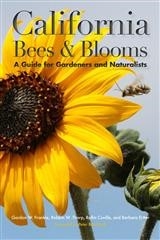Where sufficient habitat is available, wild native bee species often provide all of the pollination services needed for high crop yields and fruit quality. Depending on the species, native bees may nest in underground tunnels, hollow plant stems, and tunnels in wood. Bumble bee colonies favor small cavities under lodged grass, in abandoned rodent burrows, in trees, or old bird nests. These unmanaged pollinators are an on-site natural resource, and unlike honey bees, cannot be moved from the field when pesticides are used. In fact, many ground-nesting species, such as squash bees, long-horned bees, mining bees, and sweat bees, construct their nests in the midst of annual and perennial crop fields. To protect these bees, ensure that drifting pesticides never contact adjacent habitat, even when crops or wildflowers are not in bloom. Scout crop fields, and protect ground nests of solitary bees and bumble bees from insecticide spray. Learn more about managing pesticides and protecting bees at:
UC-IPM: http://www2.ipm.ucanr.edu/beeprecaution/
Oregon State University Extension: https://catalog.extension.oregonstate.edu/sites/catalog/files/project/pdf/pnw591.pdf
Xerces Society: www.xerces.org/
Bee Book: http://www.helpabee.org/
Attached Images:
